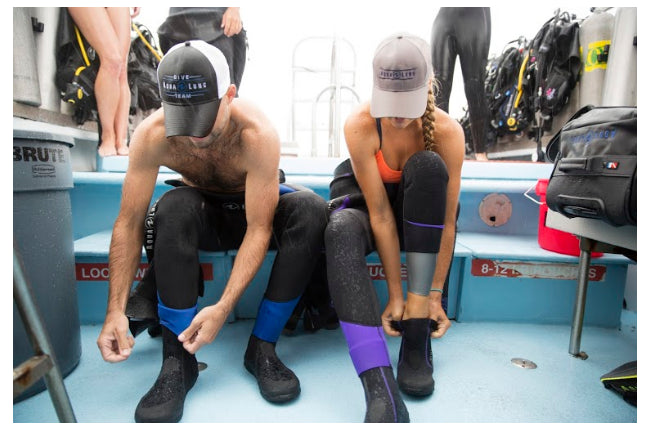Your Cart is Empty
- Shop
- Courses
- Dive
100% GEAR PRICE MATCH | FREE SHIPPING ON ORDERS OVER $99 | Hablamos español
100% GEAR PRICE MATCH | FREE SHIPPING ON ORDERS OVER $99 | Hablamos español

March 24, 2016 3 min read
Thinking of scuba diving, kayaking or surfing? Make sure you have the right wetsuit before you dive in or surf on. Experts believe that it is mandatory for the deep sea divers to wear a wetsuit for a safe and enjoyable diving experience. Not only for diving, but also for other water sports like sailing, kayaking or windsurfing, one should havegood quality equipmentto savour the sport.
But one can be easily confused while choosing a wetsuit because of its many variants. When it comes to wearables, it is a blunt remark that “You should choose whatever you feel comfortable in”. This may not help you in buying a wetsuit. To resolve all your queries we are providing some tips. In this blog we will attempt to clear your doubts and help you in buying the perfect wetsuit.
First of all,let us eliminate the most common misconception. Our customers often ask, “Won’t get wet in the wetsuit?" and we answer this question with a ‘Yes’. It is undeniable that you will
get wet in the wetsuit. When you will enter the water in your tightly fitted wetsuit, water will definitely squeeze-in from the body parts that are not covered with the suit like the wrists, neck and ankle cuts. So you are bound to get wet when you enter the water.
Getting wet in the wetsuit is no reason to doubt the quality of the suit. This will happen in all kinds of wetsuits, no matter how expensive they are. The cold water between your skin and suit gets warmed up by your body heat and forms a thin layer which prevents water from further getting into the suit. Moreover, once your wetsuit has squeezed-in water to its maximum capacity, it will no longer allow the water to enter into the suit. If you feel cold after removing the suit then there is something wrong with the size or thickness.
It is recommended that the wetsuit is as tight as possible. This would ensure that the entry and exit of water is not frequent, otherwise it can be extremely difficult to keep the body warm. Everything depends on the thin layer of water which is warmed up by the body heat. If the suit is not tight enough, this layer will constantly flush out and the suit will not be able to prevent the entry of excess water.
Wetsuits are usually made of a material called neoprene, which is a synthetic rubber and is used for its properties like high elasticity and insulation. Most of the wetsuits available in the market are of two to three neoprene thickness. When buying a wetsuit, make sure that the thickness is high in the core areas of the body that is arms and legs. Whilst in the areas like underarms and between the legs, the layer of the wetsuit should be thin for flexibility and ease of movement.
Wetsuits are not all about the size. Water sports enthusiasts, which includes scuba divers as well as surfers who venture into the water to explore, engage and enjoy, have grown exceptionally in numbers. In order to meet their demands for exclusive sports wear, more and more varieties of wetsuits are being designed and made available in the market. The temperature of the water varies depending upon the geographical positioning. Hence, considering the temperature of water before buying a wetsuit is highly recommended.
The right size, the sport that you are participating in and water temperature, all are crucial factors when buying a wetsuit. Make sure you consider all such aspects before making the purchase. Scuba and other water sports are meant for enjoying the water and an attempt to quench one’s thirst for adventure, so it is necessary that you enjoy yourself whether you are inside the water or on it.
We hope that buying a wetsuit has become now easy for you. For more information visit Squalo Divers, and check out ourawesome range of wetsuitsat great prices.
Comments will be approved before showing up.